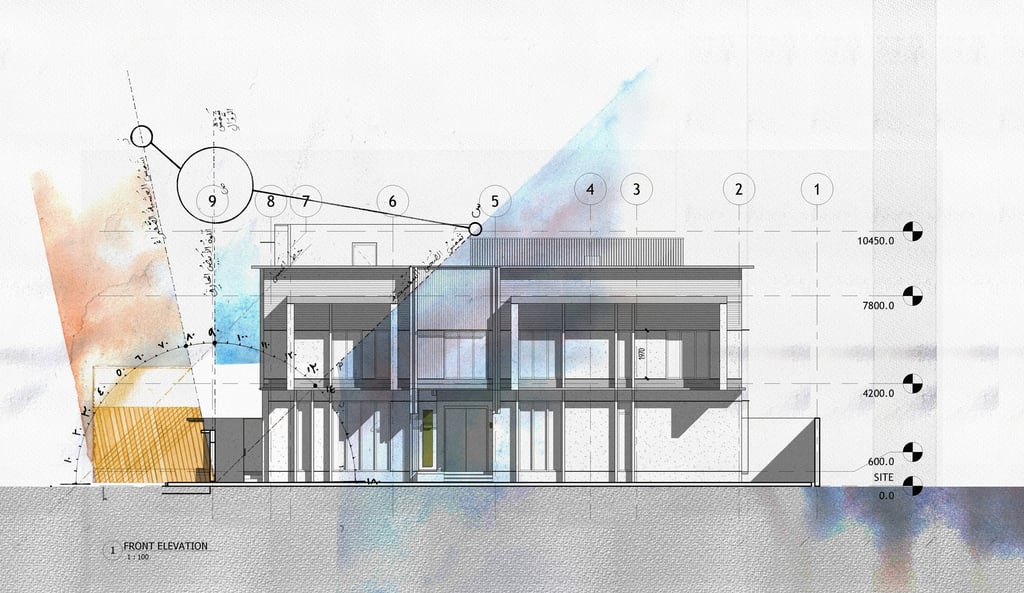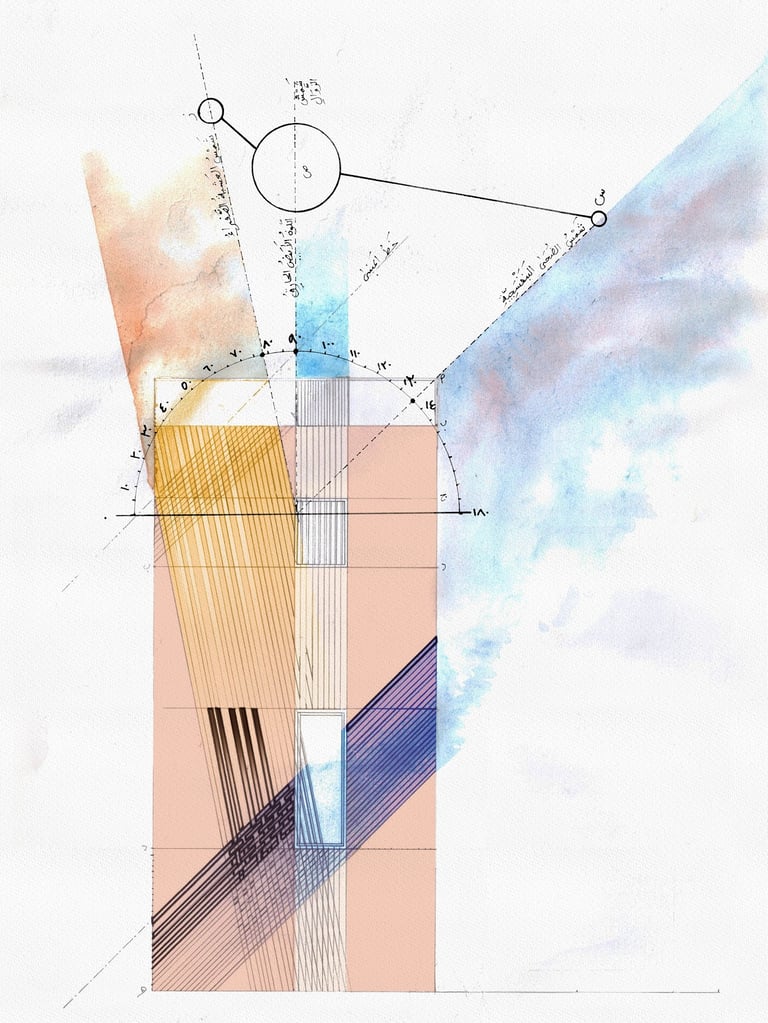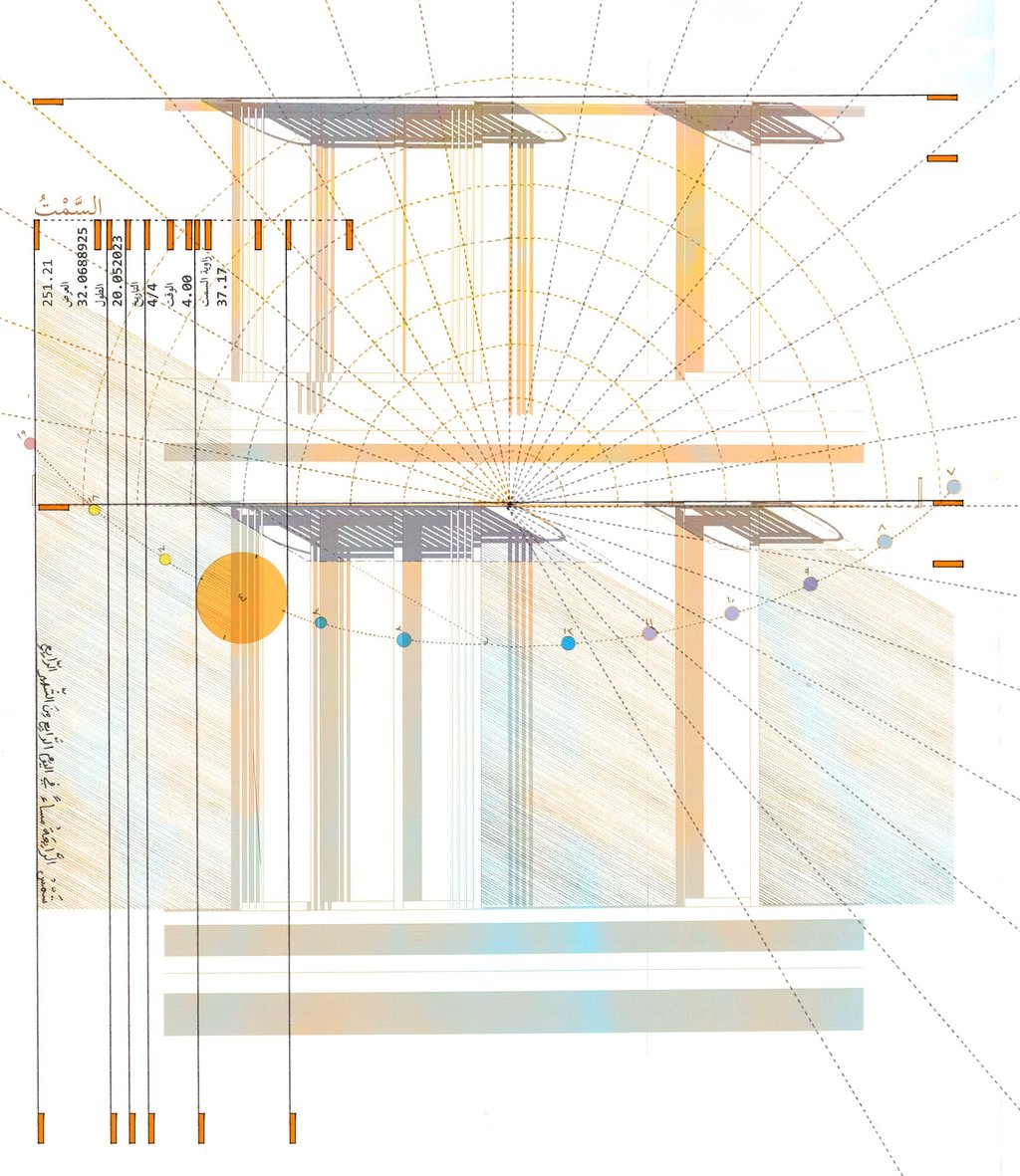Mary Issawi House
Private Client
The Mary Issawi House in Benghazi is a light dial. For centuries, architects have designed architecture that aligns with the cosmos. From Stonehenge to Nabta Playa, the conception of architecture as a tool to both celebrate and record time as a formal and architectonic spectacle has been a prevalent idea in architectural discourse.
For years, it was unknown to our studio that the word azimuth (the planar location of the sun at a given time of day) was in fact derived from the Arabic as-sumoot (sing. samt).
The series of hand-drawings and watercolours prepared to conceive the house are inspired by centuries-old Islamic North African astrolabes, as well as the more recent time-bound architectural drawings of Temple Island by Archigram's Michael Webb.
In more recent times, we also find in the architecture of Philippe Rahm, or Steven Holl's Chapel of St. Ignatius, an architecture that revolves with time. In the case of the Mary Issawi House, Libyan mud mixed into the plaster, and Arabic text in all of the drawings ensure the language very much sits in the Africa of the 2020s.
Angular incisions in the concrete activate three of the facades in the house, at only three moments in three days of the year. The azimuth and elevation of the sun at the precise spot the house is located in Benghazi generate the angle at which the concrete incisions are made. A perfect alignment takes place every day, but also happens at one spectacular moment of year each year in which the time, day and month are all equal in number. Architecture thus becomes a spectacle and a celebration in line with the cosmos.
2024-2025
1. Samt Elevation 01 - 251.21 - Southwest facade on the 4th of April at 4.00 pm.
2. Conceptual drawing which initiated the project and three times of day to be investigated.
3. North Elevation at early morning.
1
2
3






